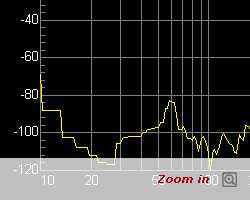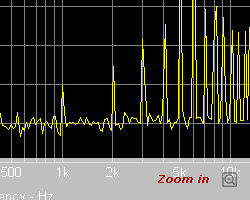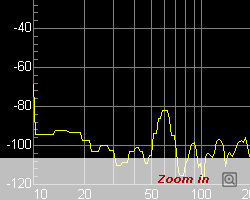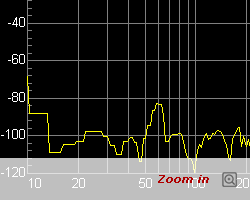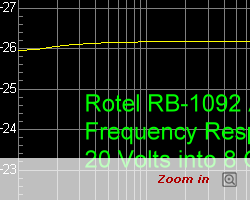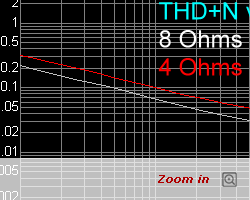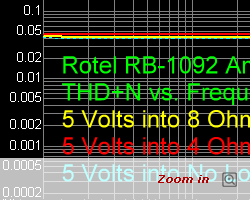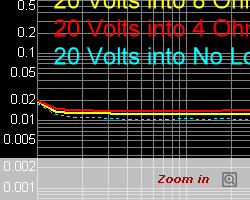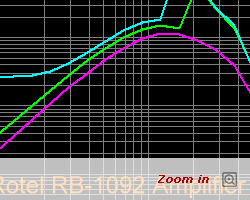 Introduction
Introduction
Decades ago, an amplifier with 80 watts per channel (they were all two-channel amplifiers in those days), was considered a big amplifier.
Now, 200 watts x 7 is common. Amplifiers of much higher power are also available.
Problem is, they are big, heavy, and they are inefficient Class A/B, burning lots of electricity even at low volume, which makes them get very warm.
Nothing wrong with that, really, as long as you are willing to put up with it. They have great sound.
But, what if you don’t have room for a huge amplifier, or your spouse just does not want to see a big black chassis sitting on the shelf?
Suppose you have a physical disability such that you cannot move heavy components around?
What if your equipment cabinet is closed without ventilation so you can’t put an amplifier in there that gets hot?
Specifications
- Class D (Switching)
- Power Output: 500 Watts RMS x 2 into 8 Ohms
- MFR: 10 Hz – 40 kHz ± 3 dB
- Input Sensitivity: 2.2 Volts
- Input Impedance: 11.1 kOhms
- Power Consumption: 69 Watts in Idle
- Dimensions: 3.6″ H x 17.1″ W x 16.1″ D
- Weight: 22 Pounds
- MSRP: $2,499 USA
Enter Class D
We all know about Class A and Class A/B amplifiers. But what about Class D? Just about everyone calls them “Digital”. But, did you know they are not really digital?
It is not necessarily a big deal to call Class D amplifiers “Digital”. It is convenient to remember them that way, because of the “D”. But the D was assigned simply because it was the next letter in the alphabet that was available, rather than because the design was digital.
Class D actually is a “Switching” circuit. What this means is that the rail voltage is turned completely on or completely off very quickly, and these tiny “jolts” create the waveform.
For CD players, which use PCM (Pulse Code Modulation), the circuit is indeed digital. A 16 or 24 bit number codes for a specific voltage on the waveform. But for switching amplifiers, PWM (Pulse Width Modulation) is used, which is analog. The output voltage is turned on at full value for varying lengths of time, at high frequency. The height of the waveform depends on how long the voltage is left on (the “Width”).
Class D amplifiers have been around quite a while actually. The problem was that they didn’t sound very good (with one or two exceptions) when used full range. Up until recently, they were used primarily as subwoofer amplifiers, where they perform beautifully, because they operate only in the low frequency range for that purpose.
Class D has begun to emerge as useful in full range products only in the last couple of years because the technology to switch at very high frequency – necessary for a full range switching amplifier – is now easier (and less expensive) to accomplish. In the next few years, we will see more and more Class D products for the home and for cars as well.
Here are some links to articles about Class D amplifier design:
http://en.wikipedia.org/wiki/PWM_amplifier
http://sound.westhost.com/articles/pwm.htm
The Rotel RB-1092
Along with several companies out there, Rotel has now entered the switching power amplifier arena with the RB-1092. It is a relatively small package (22 pounds) which produces 500 watts RMS into 8 ohms for each of two channels. This is a huge amount of power for an amplifier that you can basically lift with one hand.
The front panel is a nice simple design with a silver center piece flanked by small black heat sinks. There is a single on/off button with a blue LED above it and protection indicator lights. The back of the amplifier has a 12 volt trigger (in and out), and unbalanced RCA input connectors.

There are two sets of binding posts for each channel allowing for easy bi-wiring (if that’s your thing). The binding posts are high quality and easy to tighten, allowing for bare wire, spades, or banana plugs. There are also Speakon® speaker connectors if you have the proper cables.
Setup
The setup I used for critical listening of the RB-1092 included a Holman preamplifier, Onix XCD-88 CD player, and a pair of B&W 804 speakers. The Rotel RB-1092 class D amplifier took the place normally reserved for a Luxman M-113 stereo amplifier. It should be noted that the Luxman, while rated at one tenth the power output of the Rotel, takes up twice the room that the Rotel does.
For this amp review I choose to use Pork Soda by Primus, Come Away with Me by Norah Jones, and Mule Variations by Tom Waits.
Here is a neat trick. Go to your local hi-fi shop, ask to listen to one of their more powerful mid-priced amplifiers hooked up to some juicy higher-end speakers, and drop in anything by Primus. Within moments, you will have the listening room to yourself.
If you can look past the unorthodox sound, you will find music that is an absolute delight to listen to. The band Primus is truly an oddity – their albums have comparatively good sound quality (considering the content), they are astonishingly tight musicians, and the songs are always interesting.
And they have a way of exploiting their instruments to deliver a sound that is far from ordinary. Really, really far from mundane.
This entire Pork Soda album has solid mid-bass coming from both Les Claypool’s (lead) bass guitar and Tim Alexander’s massive drum kit. The double kick drum on DMV played through the Rotel RB-1092 was solid and full. Larry Lalonde’s guitar had its own layer, never stepping over the two other instruments. The man knows how to bend a note, and I could hear it right where it should be.
The bass lines had noticeably more impact than with my Luxman amp. Headroom has its benefits, and they were apparent with this amplifier. The biggest difference between the RB-1092 and my Luxman is that the layers are all distinct and clearly presented with the Rotel. At times they tend to meld and blur when played through the Luxman.
“Nature Boy” starts with a kick drum and high hat. This provides the beat for the first minute, then Claypool jumps all over it with a twisted bass line. The entire time Tim’s beat still stays on his own level, and when he adds more drums to the mix, you hear him hit each one from the left side of his drum kit over to the right side. This is a feat I have not heard with any amplifier/speaker combination (a review of the B&W 804s is forthcoming).
Larry’s surf-metal guitar wails almost knock everyone over. The whole time the original beat laid down by Tim is still audible. The Rotel RB-1092 easily handled the raw energy and detail of this three-piece band without compromising any of the layers. Sure there maybe only three layers in all; if you’ve ever listened to this disc you will know that is more than enough. The bass produced by this amplifier was clearly better than my Luxman. The reason for this is that Class D is very efficient, so nearly 100% of the available juice from the power supply is for music, not heat production. Deep bass needs plenty of current from the power supply.
A completely different musical experience, Norah Jones’ Come Away with Me was next in queue. I was able to hear the layers of music clearer than with either my Marantz receiver or Luxman stereo amplifier. It felt as each note had just a little longer decay, as if the dynamic range were opened up and the quieter layers became more audible.
The disc was a whole new experience with 500 watts per side in reserve. Some amplifiers sound great at one end of the volume scale or the other. With this disc, the Rotel RB-1092 was most pleasant from mid to loud volumes, and increasing the volume did not cause any loss of detail or clarity. In fact, the sound opened up nicely. As with the Primus disc, the bass was ample and full, and this was with the B&Ws running without a subwoofer.
Next up I threw on Tom Waits’ Mule Variations. This disc has more instruments and creative recording than most bands ever use in their entire catalog. Tom’s voice is an instrument unto itself, and the Rotel clearly defined it with only slight midrange bloom noticeable on some tracks. A standout song on this disc is “Chocolate Jesus”. The recording was made outdoors and has some impromptu backup vocals by the local rooster.
With the Luxman, the rooster appeared to be in the recording with the rest of the music, nothing special. Once the Rotel amplifier was introduced into the mix, the layers of the music opened up, and the rooster was coming from the far back corner behind the speakers. The extra oomph in the low end provided by the amplifier did have the negative effect of overemphasizing the low frequency noise present in this song. However, the rest of the disc benefited greatly from the solid bass provided by the Rotel.
On the Bench (JEJ)
We have a lot of graphs to go through here, so let’s get started. For the tests, I used an Audio Precision AUX-002 switching amplifier filter, which reduces the amount of switching frequency noise getting into the Audio Precision test instrument.
At 1 kHz and 5 volts output into 8 ohms (a little over 3 watts, which is a typical listening power), THD+N was only about 0.03%.
At 4 ohms, THD+N went up a bit, but not significantly.
At 20 volts into 8 ohms (50 watts), THD+N was still low.
And at 4 ohms, still less than 0.04&perc;.
IMD was also low, only 0.004&perc; with the standard SMPTE/DIN test, using a combination of 60 Hz and 2 kHz at an output of 5 volts into 8 ohms. The test measures the resulting peaks ± 250 Hz around the upper test frequency.
At 4 ohms, IMD went up, expectedly, but it was still reasonably low.
Even at 20 volts output into 8 ohms, IMD was low, at 0.006&perc;. As the chart indicates, the amplifier needed 1 volt input to produce the 50 watts output into 8 ohms.
And at 4 ohms, less than 0.02&perc;.
With 5 kHz and 6 kHz sine wave test frequencies, and 20 volts into 8 ohms, the A+B peak at 11 kHz was 84 dB below the test frequencies, and the B-A peak at 1 kHz was – 106 dB. This test is non-standard, so there are no SMPTE/DIN resulting IMD numbers.
At 4 ohms, the A+B peak was at – 77 dB, and the B-A peak was at – 104 dB.
For 10 kHz and 11 kHz test signals – again, a non-standard test, so we don’t have SMPTE/DIN data – A+B at 21 kHz was – 70 dB, and B-A at 1 kHz was – 108 dB.
At 4 Ohms, A+B was at – 72 dB, and B-A was at – 112 dB.
The measured frequency response was 10 Hz to 20 kHz ± 0.3 dB. This “restricted” frequency response is common with switching amplifiers so as not to have the output frequencies being affected by the switching frequency.
For THD+N vs. Power Output, the Rotel RB-1092 delivered 600 watts RMS into 8 ohm loads with both channels operating, before clipping (defined as 1% THD+N). At 4 ohms, the amplifier shut down at 800 watts RMS output, with both channels operating. That is a lot of power!
THD+N vs. Frequency, at 5 volts RMS output into various loads showed a rise above 2 kHz for 8 and 4 ohms.
At 20 volts output, and a 4 ohm load, THD+N rose above 1% between 10 kHz and 20 kHz. However, the harmonics would not be audible for the most part (the second harmonic of 10 kHz is 20 kHz, just barely audible even when you are young). Keep in mind that all amplifiers have a rise in THD+N in the upper frequencies, even the $21,000 Lamm monoblocks, and Mark Levinson power amplifiers, which are among the finest in the world. What you pay for is the amount of rise that occurs. The flatter the curve, the more neutral the sound. The higher the rise, the brighter the sound. If the rise starts at a lower frequency, the result might be heard as a midrange “bloom”.
The tradeoff with the RB-1092 is that you have an enormous amount of power that will deliver better dynamics than a lower power Class A/B amplifier, but with more brightness (less neutral). Of course, this depends on the design. There are some Class A/B amplifiers out there that are somewhat bright as well. And, this is not necessarily unappealing. It is all based on the listener’s preferences. Many consumers like the brightness, which adds an edge to the sound. Midrange bloom adds body.
At very high output, here is where the current crop of switching amplifiers don’t perform as well as Class A/B. Notice that at 50 volts and 63 volts output (312 watts and 496 watts respectively, into 8 ohms), THD+N rises above 1% at 10 Hz and above 5 kHz. The 10 Hz distortion would not be audible, but the 5 kHz and above might be, although the speakers would be distorting far more than 1% at such a high volume, so this is not necessarily a significant issue.
In fact, Jared said that the sound was great at high volume, although I suspect he never came near 300 watts being delivered to the speakers. So, my feelings on this are that, at conventional volume levels, the amplifier should be fine. For the transient peaks, which might require 300 watts or more, everything would be distorting: amplifier, speakers, and probably your ear drums, and it would be for a very short duration.
Conclusions
Some people enjoy having mammoth sized amplifiers costing megabucks. Others don’t have the space, the money, or the spouse approval to do so. Clearly, manufactures are aware of this and are adding components to their lineup that are able to meet these requirements.
You have always been able to buy small efficient switching power amplifiers. Unfortunately, they were often very expensive, terrible sounding, or worse . . . both.
We are seeing more choices now of smartly designed, quality components that deliver the goods without taking up too much space. It doesn’t come absolutely cheap however, for $2500 only gets you two channels. Of course that is two channels of virtually bottomless power mind you.
In fact, the power delivered by this amp was astounding and the B&W 804 towers are able to throw forward some serious sound when pushed hard. I never found myself wishing for more power or being fatigued with extended listening even with my heavier discs.
I love hearing new layers within my old music, and the Rotel amp did just that. Rotel has constructed a high quality dual-mono class D that excels from the bottom up.










